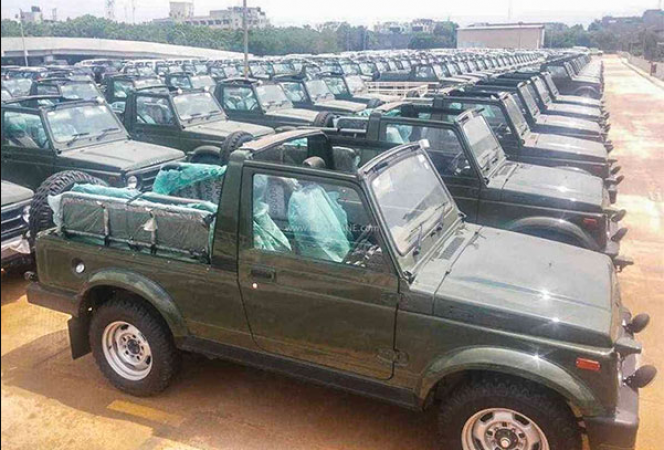
USA: The decision of the Indian Army to keep using the Maruti Suzuki Gipsy can be further explored by taking into account a number of factors, including:
1. Long-standing service history: The Maruti Suzuki Gypsy has a long-standing service history with the Indian Army, dating back to the 1980s. Over the years, the vehicle has established a reputation for its reliability and performance in diverse operational environments. This familiarity and trust built over time have contributed to its continued use.
2. Customization and adaptation: The Indian Army has modified and adapted the Gypsy to suit its specific requirements. These modifications include reinforcing the chassis, adding roll cages, installing weapon mounts, and incorporating other equipment necessary for military operations. This customization has enhanced the vehicle's capabilities and made it a versatile platform for various roles.
Also Read: Yezdi Roadster vs Honda H'ness CB350
3. Availability and logistics: The Indian Army has a significant fleet of Maruti Suzuki Gypsy vehicles, which ensures a readily available supply for replacement and spares. This aspect is crucial for maintaining operational readiness and minimizing logistical challenges. Since the Gypsy has been in service for several years, the Army has established an efficient supply chain and maintenance infrastructure to support its continued use.
4. Local production and support: The Maruti Suzuki Gypsy is manufactured in India, which offers advantages in terms of production, procurement, and after-sales support. The availability of spare parts and local expertise for repairs and maintenance contributes to cost-effectiveness and operational efficiency. It also aligns with the government's 'Make in India' initiative, promoting domestic manufacturing and self-reliance in defense production.
Also Read: Tata Cars Establishment: Revolutionizing the Automotive Industry
5. Role-specific suitability: The Indian Army primarily deploys the Gypsy for roles such as transportation of personnel, reconnaissance, communication support, and patrolling. These roles often require agility, maneuverability, and the ability to traverse challenging terrains. The Gypsy's compact size, off-road capabilities, and ease of handling make it well-suited for these tasks, especially in areas with limited infrastructure.
6. Budgetary considerations: Introducing and maintaining a new fleet of vehicles on a large scale can be financially burdensome. The Gypsy's affordability compared to more modern and advanced military vehicles allows the Army to allocate its budget to other crucial defense priorities. This cost-effectiveness is particularly relevant for the Indian Army, considering its size and diverse operational requirements.
Also Read: Why the Yamaha Rx100 is prohibited in India?
While the Maruti Suzuki Gipsy continues to serve the Indian Army, efforts are being made to gradually replace older vehicles in the Army's fleet with more modern ones. The introduction of vehicles like the Mahindra Scorpio and Tata Safari Storme is evidence of the Army's ongoing effort to modernise and diversify its fleet of vehicles.